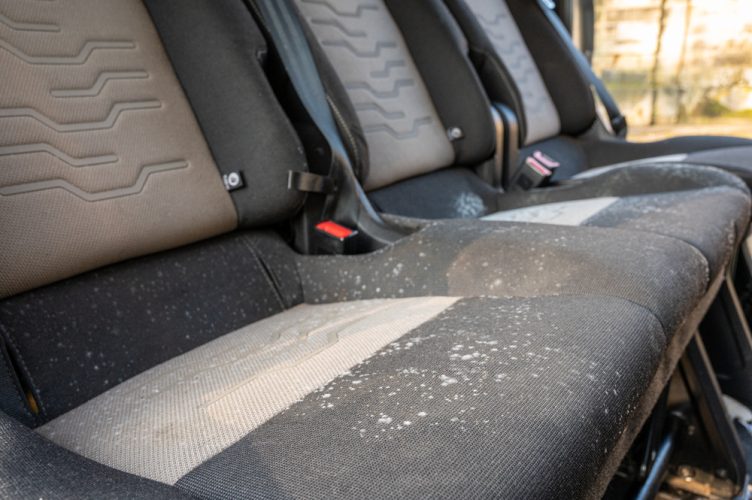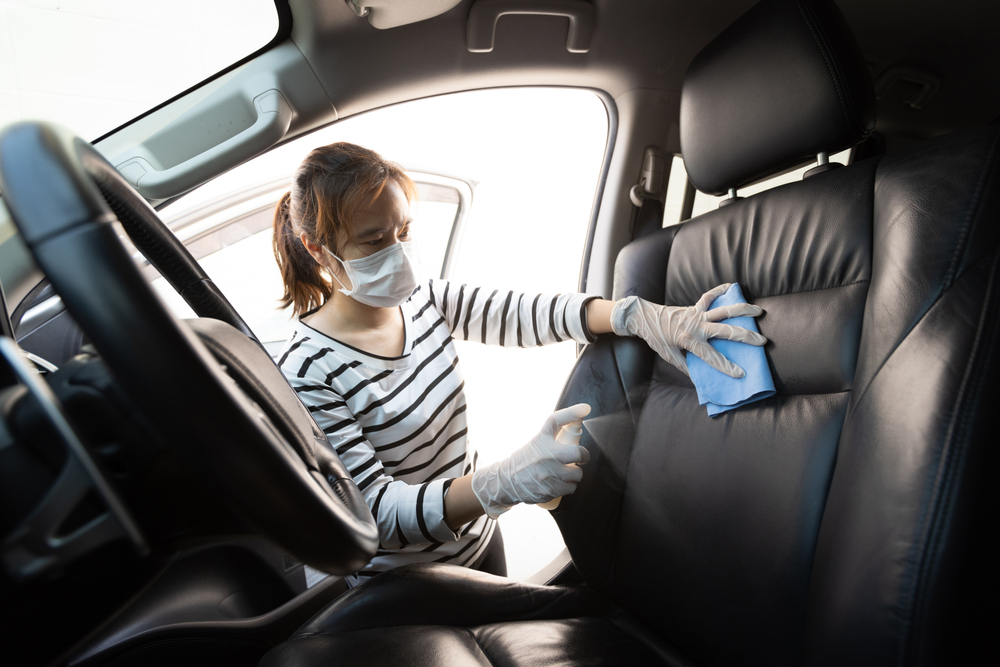
What if the biggest threat to your health was secretly lurking in your car?
As a driver, you try to protect your car with the right automobile insurance. This insurance also helps protect you from danger. Unfortunately, one of the biggest dangers is something that insurance can’t protect you from.
If you’ve been feeling sick lately and you don’t know why, black mold spores may be to blame. In fact, your auto could be full of spores, and you don’t even know it!
Over time, the presence of mildew can cause some major health problems. Fortunately, our guide will walk you through how to detect it, how to remove it, and how to keep these dangerous spores from popping up again.
What Is Mold?
It may refer to different types of fungi. These fungi grow and spread very quickly, and they can easily cause a number of health problems.
They can sometimes be detected when you smell an unpleasant odor. However, the scariest thing is that it is often hidden where you cannot easily detect it. In your home, it may lurk in corners and behind walls. In your car, it often lurks beneath seats and other areas that you cannot easily see.
Our guide will help you learn more about it and how to remove it. But to truly prevent this from happening again, you need to know how and why spores grow there in the first place.
How Does Mold Grow?
It requires a combination of moisture and humidity to grow. When this happens, it’s usually because a driver has spilled a drink or left either windows or a sunroof open where rain could get into the vehicle (spills and rainfall are the most common reasons it develops) and soak into the carpets and seats. Therefore, it’s a good idea to avoid drinking in your ride whenever possible.
There is a chance the mildew isn’t your fault. Did you buy used? If so, it may be due to the actions of a previous driver (something many camper buyers discover after the fact) that occurred a long time ago. You can check on the history by looking up its VIN number. This may reveal information about previous water damage or even previous recalls that can explain the presence of damaging mildew in the carpets.
Now you know more about it, including the moisture required for it to grow. In addition to keeping water and other liquids from spilling, it’s important to know just how dangerous it can be to your health.
Is Mold in a Car Dangerous?
It may be very dangerous. To understand how dangerous it is, you must first understand the different types you may be dealing with.
The most dangerous type is black mold. In addition to being toxic, it can cause a number of painful health issues for people, especially over a long time period. In rare cases, it can also trigger extreme allergies and even lead to death.
The worst part is that it can be difficult to determine what kind of mold spores you have. To stay safe, your best bet is to assume you have the toxic type and take immediate measures to remove it. Of course, to know whether you even need to look for it, it’s important to know the signs that you may be suffering from an allergy or infection.

Allergy and Infection Symptoms
If you have mildew, it may lead to a number of possible symptoms. We will walk you through all the possibilities. Keep in mind that if you are experiencing any of these and you don’t know why, you should consult with your doctor about possible infection right away.
Many of the symptoms of fungus allergy and infection could be confused with allergic reactions or the common cold. This includes sneezing, coughing, skin irritation, a runny nose, nasal congestion, dry skin, and eyes that are itchy or watery. Multiple things could cause such symptoms, so you may want to eliminate the possibilities before you assume anything.
In some cases, people may have an allergic reaction, especially if they have asthma. Those with asthma who come into the presence of these spores may experience chest tightness, wheezing, coughing, or general shortness of breath, which can be especially difficult for young children.
Again, if you are suffering from any of these symptoms and you don’t know why, it’s important to see your doctor sooner rather than later!
How Long Does It Take Mold to Grow?
It doesn’t take a long time to develop and may colonize and spread in as little as a few days. While you should always pay close attention to signs of mildew, this is particularly important if you have had any recent spills or heavy rainfall leakage inside your vehicle.
It’s important to identify and begin treating growth as soon as possible (if you detect foul odor in the interior, that’s a major sign). The longer it spreads, the more your health is at risk, and the more your auto is potentially damaged. In extensive cases, there may be enough mold that it cannot be removed and the car may need to be totaled!
How to Keep It from Growing
Below, we have extensive information on how to remove growth. However, it’s always better to prevent an invasion from happening than to have to deal with it after the fact. How, then, can you keep mold spores from growing?
The best thing you can do to prevent it is something we already touched on: keeping unwanted moisture out. That means always using lids and taking other simple measures to prevent spilling drinks.
Additionally, make sure to seal your windows tight, especially on a rainy day. This helps remove one of the factors that cause infestation. Remember also to check and make sure moisture stayed out if you experienced anything like a recent blizzard.
Beyond that, you can prevent growth by making sure your ventilation system is in good working order. This helps prevent the humid environments that it needs to thrive. Finally, beware of the possibility of an invasion via pets, old carpet, furniture, or anything else that may ride with you.
Ways to Remove It
Now you know how dangerous a fungi problem can be and how to prevent it from growing. But how can you deal with the stuff that may already be in your vehicle?
Below, we have a straightforward guide to identifying and removing unwanted spores from the vehicle. By following each of these steps, you can safeguard your health and help protect your car from an unwanted infestation.
Remember that in the process of making improvements to your ride, you don’t want to go too far in making modifications. Some types of auto insurance can be voided if you make changes and don’t notify your insurance company.
Moving Your Car into the Light
The first step is very simple. You need to move your wheels into direct sunlight if possible. After you park the vehicle, be sure to open all the doors and let that fresh air in.
The goal here is to help dry it out. Because it needs moisture to grow, drying the car out now can help prevent a possible infestation from spreading any more than it already has.
On top of that, it often has a nasty smell. If you’ve detected such a smell, opening the doors can help air the unwanted odor out. We recommend airing everything out for at least 20 minutes. This will make the next step easier: inspecting for signs of a problem.
Mask Up and Inspect
Next, you need to don a dust mask before you enter the vehicle. While opening the doors can both dry the interior and air it out, growth may be lurking under the seats and in other areas. Breathing this in can harm your health, but a simple dust mask can protect you.
Once you enter, you need to look for signs. This can be difficult because it may be hidden and may be in multiple locations throughout the vehicle.
It doesn’t hurt to be thorough and inspect the entirety. However, there are certain areas that you should focus your attention on first.
Knowing Where to Look
One of the ways fungus hides is by lurking inside absorbent or porous surfaces. And that means these are the first areas where you should look.
Such surfaces include any carpet. You also need for the presence of mold on and in the seats, including looking behind them.
After that, you need to check the rest of the flooring, the seatbelts, corners, the foam inside seat covers, and anywhere else you can think of. Remember, this growth will appear as large, round clusters of green, black, white, or grayish-brown.
Scrape Without Spreading
Now you know what it looks like and where to look. If you do have an infestation, you are soon to discover it. However, what are you supposed to do after that?
Take a brush and see if you can scrape it out. This should be a relatively delicate operation, so you may want to use an old toothbrush. If you’re not careful, you may end up spreading it around even as you try to remove it.
Speaking of removal, the brush is not going to be able to get everything. But using the brush can help you break up the larger clusters. After that, cleaning what is left is a matter of using the right cleaner.
Which Is the Right Cleaner?
When it comes to cleaning out mildew many drivers make the rookie mistake of trying to use either ammonia or bleach. Both of these are bad ideas. While they may be able to kill surface growth, they won’t be able to penetrate and remove anything deeper. To make things worse, ammonia and bleach are both likely to stain your interior, possibly doing more to damage the value. Plus, ammonia helps fungus growth prosper, so using it may cause it to spread even deeper into your vehicle.
Instead, you should use a product like MoldStat or some over-the-counter enzyme eater. The way these products work is they literally eat the spores until there is nothing left. Better still, these products work at a molecular level, so you don’t have to worry about unwanted growth lingering after you clean.
With that being said, you can experiment with different things that may work better for your interior problem, especially the upholstery. For example, one very simple solution is to use white vinegar as a natural solution. With a mixture of eight parts vinegar and two parts water in a spray bottle, you should have what you need to take care of the infestation in the affected area. However, vinegar is very stinky, so you may want to keep those doors open to air things out for a bit longer!
Any vinegar you spray is going to need to soak for at least 20 minutes. You may want to spread a bit of Borax on top to help remove it. Baking soda is also a natural absorbent and cleaner. No matter your cleaning method, you’ll want to use a dehumidifier or good, old-fashioned sunlight to dry everything out!
To complete cleaning, you may want to use a wet-dry vacuum cleaner. Unlike a regular vacuum cleaner, a wet-dry vac can restore your car’s interior to its original condition. Alternatively, a steam cleaner may be an effective method of cleaning everything from seatbelts to your favorite fabric seat.
Using baking soda to periodically clean carpeting and seats can help. Just sprinkle it on, let it sit for 20 minutes and vacuum it up.
If all these steps seem like a bit much, don’t hesitate to have your ride professionally cleaned. It may be expensive, but can you really put a price tag on protecting your health?
Protect Your Car with the Right Insurance Today!
Now you know about the dangers of mold and how to protect yourself and your car from these dangers. However, do you know where to find the best auto insurance to keep as safe as possible?
Good news: Freeway Insurance is here to provide you with the cheap automobile insurance coverage you have been looking for. We can quickly and easily provide you with an online quote. Or feel free to give us a call at (800) 777-5620. Finally, you can also visit us at an office near you.



